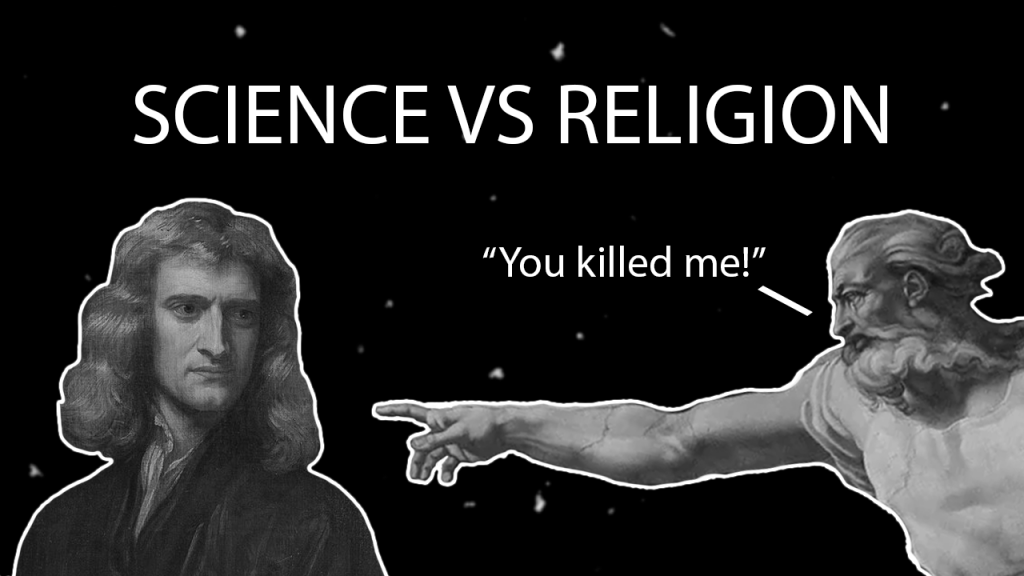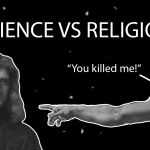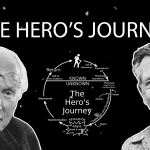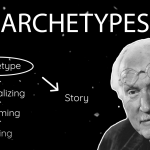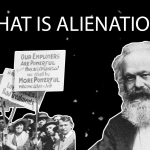Intro
Simple question: Where is your house? The answer is a simple geological one: it’s in such and such country on this particular street.
How many minutes are in an hour. Also a simple question. Becouse we have agreed that there are 60 minutes in a hour.
Now, where are you when you dream? The answer might not be as straight forward as you think.
Then we go one step further, where is your dream when you are dreaming? Where are thoughts when you think them?
When I think of me being on the moon, then am I on the moon? If not, what or who is then?
And why does time slow down when you start watching the clock, but speeds up when you are doing something meaningful?
We know that time is not actually slowing down when we look at it from a scientific point of view, yet we perceive it to have slowed down.
The difference between these questions and the answers to these questions, is our underlying model of the universe.
There are two fundamentally different models of the universe, one which we can use to describe how the world is, the other to describe how we perceive the world, both can significantly differ from each other and change the way we act in the world.
These two models are also known as the physical and the metaphysical models of the universe.
Or as described by famous Theologian Mircea Eliade, in terms of the sacred and the profane.
In reading story, myth and legend, it is crucial to know which of the two models we are using, since the outcome of the stories will significantly differ depending on the model that is used.
Since,
“Myth is not primitive proto-science. It is a qualitatively different phenomenon. Science might be considered “description of the world with regards to those aspects that are consensually apprehensible” or “specification of the most effective mode of reaching an end (given a defined end).” Myth can be more accurately regarded as “description of the world as it signifies (for action).” […] Myth describes things in terms of their unique or shared affective valence, their value, their motivational significance.”
The reason that we can describe the location of our house is becouse we are much more familiar with the physical model of the universe, compared to the metaphysical model.
For we have largely disregarded the metaphysical model of the universe, or at least are not consciously aware of it anymore.
However, we do still use this model even if we are not conscious of it.
We can still feel it in music, art and dance, but also in mental illness such as depression, where time and space are perceived differently than in our “normal” mode of being.
We can often not describe feelings using the physical model of the world, no, here we use the metaphysical, things we cannot express it in terms of the physical
To better understand the world around us, and to properly answer the previously posed questions, we will go over the two models of the universe in greater detail.
Starting with the most well-known model today: the physical model
The Physical (profane) Model
The physical model of the universe is what we today also call science.
But what is science? Well, by analogy of Alan Watts, science is, first and foremost, a method of description.
Take for example this form. It’s a wiggly form. As often is the case in nature.
But now science aims to describe this shape in a very precise way.
Therefore it superimposes a grid like system, with rectangular shapes, onto the wiggly form.
We can even give the squares numbers to be able to describe their location.
We could use distance to measure some size or the surface of the shape, using the unit of meters for example.
But meters are nothing more than an agreement between all people that a meter is precisely one meter. But in nature meters do not exist. It is only a tool to describe the world around us.
When we hence introduce the concept of time, we can also look at things like cause and effect.
A phenomena best described by a paragraph out of The Gay Science by Nietzsche:
“112 Cause and effect. - We call it 'explanation', but 'description' is what distinguishes us from older stages of knowledge and science. We are better at describing - we explain just as little as all our predecessors. We have uncovered a diverse succession where the naïve man and investigator of older cultures saw only two different things, 'cause' and 'effect', as they said; we have perfected the picture of becoming but haven't got over, got behind the picture. The series of 'causes' faces us much more completely in each case; we reason, 'this and that must precede for that to follow' - but we haven't thereby understood anything. The specifically qualitative aspect for example of every chemical process, still appears to be a 'miracle', as does every locomotion; no one has 'explained' the push. And how could we explain! We are operating only with things that do not exist - with lines, surfaces, bodies, atoms, divisible times, divisible spaces. How is explanation to be at all possible when we first turn everything into a picture - our picture! It is enough to view science as an attempt to humanize things as faithfully as possible; we learn to describe ourselves more and more precisely as we describe things and their succession. Cause and effect: there is probably never such a duality; in truth a continuum faces us, from which we isolate a few pieces, just as we always perceive a movement only as isolated points, i.e. do not really see, but infer. The suddenness with which many effects stand out misleads us; it is a suddenness only for us. There is an infinite number of processes that elude us in this second of suddenness. An intellect that saw cause and effect as a continuum, not, as we do, as arbitrary division and dismemberment - that saw the stream of the event - would reject the concept of cause and effect and deny all determinedness.”
It is us who invented the concept of duality. Up and down, cause and effect, ones and zeros.
This might all sound fairly negative with regards to the scientific system, but the opposite is true!
There has never been a more effective system on the face of the earth to solve physical problems then the scientific representation of the universe.
By describing the world using the physical model, we have made literal models of our world that can help us predict and thus shield us from the negative aspects of nature.
We could today no longer survive without this representation of the world!
"121 Life not an argument. - We have arranged for ourselves a world in which we are able to live - by positing bodies, lines, planes, causes and effects, motion and rest, form and content; without these articles of faith no one could endure living! But that does not prove them. Life is not an argument; the conditions of life might include error."
The Metaphysical (sacred) Model
The metaphysical concept of place and time is harder to understand, as we need to forget for a moment the physical constructs of the world as we have just seen.
As we have seen before, there is a difference in describing how the world IS, and how we perceive the world.
In the metaphysical model, the concept of time and space are not absolute as seen in the physical model, but rather relative.
We will start with relative space:
Relative space:
The best way to illustrate Relative space is to look at the dream.
The dream is a strange phenomenon, for why do you dream, who is the one that dreams the dream and where is the dream when you dream it?
For example, when we go to sleep the dream just emerges, just as thoughts emerge, but this is not voluntarily, it is not US that controls this happening, but then what does?
The best answers to these questions can be found in the Childs conception of the dream after research by psychologist jean Piaget.
In this study, the researchers ask children multiple questions related to dreams. One of these children is a boy named Fav:
“Fav (8) belongs to a class whose teacher follows the excellent practice of giving each child an " observation notebook," in which the child notes down each day, with or without the help of drawings, an event he has personally observed outside school. One morning Fav noted down, as always, spontaneously : "I dreamt that the devil wanted to boil me," and he accompanied the observation with a drawing, of which we give a reproduction : on the left Fav is seen in bed, in the centre is the devil, and on the right Fav stands, in his nightshirt, in front of the devil who is about to boil him. Our attention was called to this drawing and we sought out Fav. The following are the observations we made:"
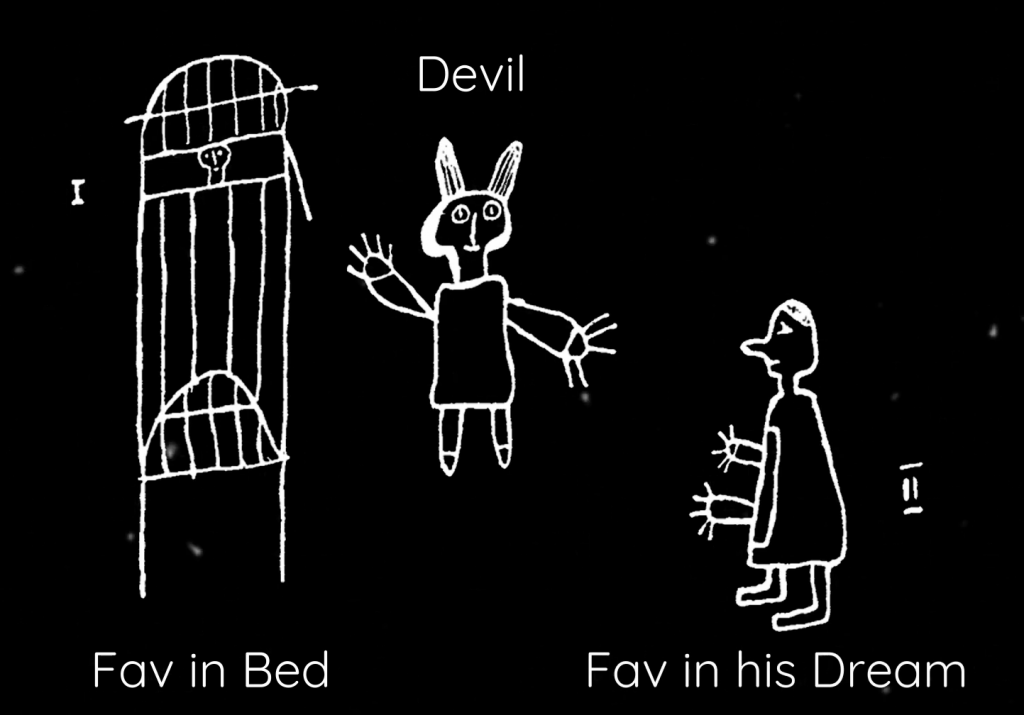
“Where is the dream ? — In front of the eyes.—Is there really anything in front of the eyes ? — Yes.—What ? — The dream." Fav thus realises there is something internal about the dream, he knows the dream's appearance of externality to be illusion (" you can't see the dream on the eyes "), and yet he admits that for the illusion to be there, there must really be something in front of him : "Were you really there (pointing to II) ? — Yes, I was there twice over (I and II).—If I had been there, should I have seen you (II) ? — No.—What do you mean by ' I was there twice over ' ? — When I was in bed I was really there, and then when I was in my dream I was with the devil, and I was really there as well."
What we see here with Fav, is that at the moment of the dream, his imagination has become his reality.
For, when we dream, it really feels like we are there, in the dream. We even believe to be there in the moment of the dream itself.
Of course at an older age we convince ourselves that we are not actually in the place where we are dreaming, but nonetheless, on a deeper level, we perceive ourselves to be in that location, and it can even have physical effects on our bodies.
When we wake from a nightmare for example, we wake up with adrenalin rushing and our body sweating.
Therefor we cannot make the argument that the dream is not “real”. Even though it might not exist in the physical world, it definitely exists in the metaphysical world.
Relative time:
Apart from relative space, we also have relative time in in the metaphysical model of the universe.
We can for example look at the dream again, where the dream might feel like hours or days, while in fact it is only a few seconds long in physical time.
Where the dream is mainly unconscious, we also have conscious experience of relative time in festival for example:
“By its very nature sacred time is reversible in the sense that, properly speaking, it is a primordial mythical time made present. Every religious festival, any liturgical time, represents the actualization of a sacred event that took place in a mythical past, "in the beginning”."
For example, in Babylon during the course of the Akitu ceremony, a play is held which represents the God Marduk defeating the marine monster Tiamat.
This play represented the creation of the world, the renewal of the year:
“For religious man of the archaic cultures, the world is renewed annually; in other words, with each year it recovers its original sanctity, the sanctity that it possessed when it came from the Creator's hands.”
This is something that we today still see in the celebration of the New Year or our birthday for example.
“Through annual repetition of the cosmogony, time was regenerated, that is, it began again as sacred time, for it coincided with the illud tempus (time now and always) in which the world had first come into existence”
We have now seen the two versions of describing the universe, the physical and the metaphysical, both equally “real”, but with different purposes.
In general, there is no problem with these two models coexisting next to each other. However, it is when we start to confuse the two models of the universe, that we begin to get real problems.
The Negative Effects of Confusing the Two
For example, if we only look at the world through a profane lens and do away with the sacred, we reduce ourselves to nothing more than machines.
For example, if we describe dancing only in terms of motion and speed and angels, using numbers, we lose the metaphysical dimension of feelings and emotions.
It allows us to build weapons of mass destruction and force our will onto other people, since morality does not belong to the physical interpretation of the world.
On the other hand, only using the metaphysical model of the world will get us in just as much trouble. For we cannot solve physical problems, using the metaphysical world.
We cannot cure cancer by praying.
Even though it can give us mental strength and help us in our healing, it cannot physically kill the cancerous cells, as has been proven through trial and error more than once.
But to mistake the one system for the other is maybe the worst mistake of all.
Something we can clearly see in the destruction of Christianity by the church itself.
For they tried to view the Christian myth through a physical lens.
They tried to make Christ real. But becouse the highest virtue in Christianity was Truth, people noticed that they could never be like Christ. Since no one is born of a virgin, no one can literally walk on water and no one can literally turn water into wine.
In this way, the church pedestalised Jesus, but put him so high up, that mere humans could no longer reach him.
The only thing we can do is feel guilt, becouse we can never be like Christ.
This is how the church institutionalised Guilt.
Not only did this give immense power to the church, it later proved to be one of the most profitable business models ever made.
People even bought indulgences to reduce their sins.
Much in the same way as we today are willing to pay a few bucks extra for our flights, becouse we believe that this will “fix” the climate and reduce our guilt.
But in this series, we will avoid making these mistakes!
Conclusion
From now on, we will only use the correct system that is asked for in the respectable context.
We will not busy ourselves with proving the historicity of the stories myth and legends that we will look at.
It is only the archetypal and psychological significance of these story that concerns us:
“and these stories are so widely distributed over the world—attached to various heroes in various lands—that the question of whether this or that local carrier of the universal theme may or may not have been a historical, living man can be of only secondary moment. The stressing of this historical element will lead to confusion; it will simply obfuscate the picture message.”
In the next video we will look at a more psychoanalytical description of how we view the world based on the theory of Lacan.
For now, Thank you for watching the video!
Wherever you are, I hope that something good happens to you today!
And I hope to see you, in the next video!

